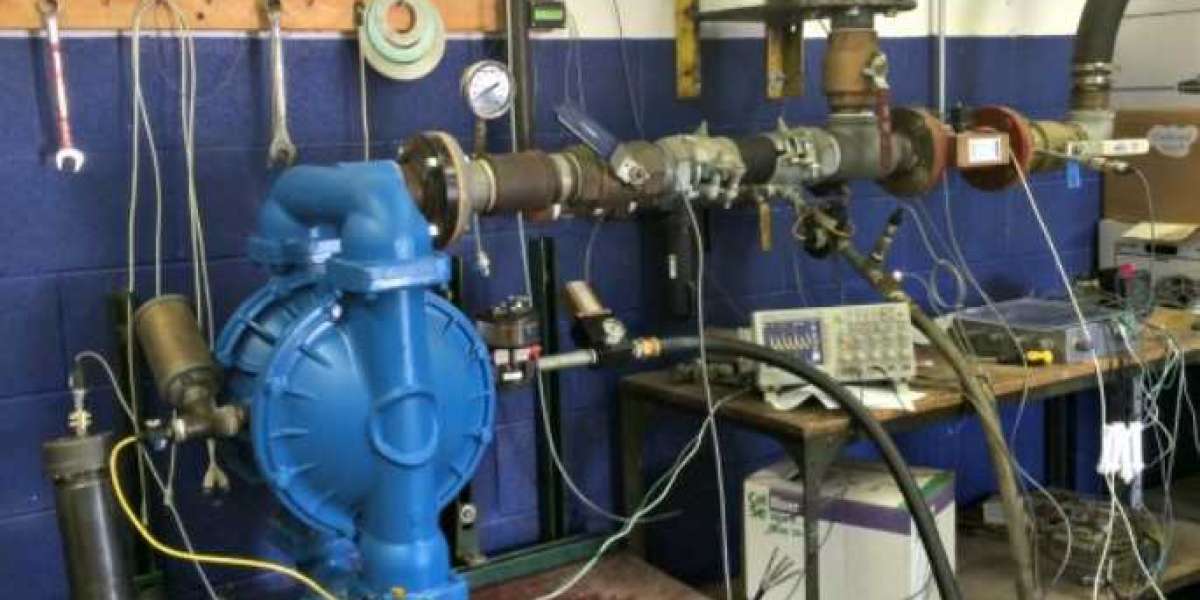When it comes to fluid transfer and handling systems, two popular types of pumps are Air-Operated Diaphragm (AOD) pumps and Centrifugal air pumps. Both serve essential roles in various industries, but they operate differently and are suited to specific applications. In this blog, we'll explore the key differences, uses, and benefits of AOD Centrifugal Air Pumps.
What is an Air-Operated Diaphragm (AOD) Pump?
An Air-Operated Diaphragm (AOD) pump uses compressed air to move liquids or slurries by flexing diaphragms. These pumps are known for their versatility and ability to handle a wide range of fluids, including those with high viscosity or containing solids.
How AOD Pumps Work
AOD pumps have two flexible diaphragms that move back and forth. As one diaphragm pulls liquid into a chamber, the other diaphragm pushes liquid out of the pump. The compressed air alternates between the two chambers, making the process continuous.
Key Features of AOD Pumps
- Self-Priming: AOD pumps can lift liquids from tanks below the pump level without needing to be filled beforehand.
- Handling of Viscous Fluids: These pumps can manage thick and sticky liquids that might clog other types of pumps.
- Dry-Run Capable: AOD pumps can run dry without causing damage, making them ideal for transferring chemicals or fluids with variable flow rates.
- Solids Handling: They can handle fluids that contain large solids, making them useful in industries like mining or wastewater management.
What is a Centrifugal Air Pump?
Centrifugal air pumps use a rotating impeller to move air or fluids. These pumps are often employed in systems requiring steady, high-volume fluid transfer at low pressure. They excel in applications where the fluid is clean, and there's no need to handle solids or slurries.
How Centrifugal Air Pumps Work
Centrifugal pumps work by converting rotational energy from a motor into energy to move the fluid. The impeller inside the pump spins rapidly, drawing the fluid into the pump and then pushing it out through the discharge.
Key Features of Centrifugal Air Pumps
- Simple Design: Centrifugal pumps have a straightforward design with fewer moving parts, which reduces the need for maintenance.
- Efficient for Large Volumes: These pumps can efficiently move large volumes of fluid, making them perfect for applications like water circulation, HVAC systems, and irrigation.
- Continuous Flow: Unlike AOD pumps, centrifugal pumps provide a smooth and continuous flow, making them ideal for systems requiring steady output.
- Cost-Effective: Due to their simple design and efficient operation, centrifugal air pumps tend to be more cost-effective in applications that don't require handling of viscous or solid-laden fluids.
Key Differences Between AOD and Centrifugal Air Pumps
| Feature | AOD Pump | Centrifugal Air Pump |
|---|---|---|
| Operation | Powered by compressed air | Powered by a motor-driven impeller |
| Fluid Handling | Ideal for viscous or solid-laden fluids | Best for clean, low-viscosity fluids |
| Dry-Run Capability | Can run dry without damage | May suffer damage if run dry |
| Flow Control | Intermittent flow | Continuous, smooth flow |
| Self-Priming | Yes, self-priming | Some models may need to be primed |
| Maintenance | Requires more maintenance due to moving diaphragms | Low maintenance due to fewer moving parts |
Choosing the Right Pump for Your Needs
Both AOD and Centrifugal air pumps have their own strengths, and selecting the right pump depends on your specific requirements. If you're handling viscous fluids, solids, or fluids that need to be pumped from lower levels, an AOD pump may be your best option. On the other hand, if you need to move large volumes of clean fluid at a constant rate, a Centrifugal air pump is likely a better fit.
Industries and Applications
AOD Pumps: AOD pumps are widely used in industries like chemicals, food processing, pharmaceuticals, and wastewater treatment due to their ability to handle complex fluids.
Centrifugal Air Pumps: These pumps are common in industries like water treatment, HVAC, agriculture, and firefighting where large, clean fluid volumes need to be moved efficiently.
Conclusion
Both AOD and Centrifugal air pumps are valuable in the industrial world, but understanding their operational differences and features can help you choose the right solution for your application. Whether it's the versatile and rugged nature of AOD pumps or the efficiency and simplicity of centrifugal air pumps, both types offer powerful solutions for a wide range of fluid transfer needs







